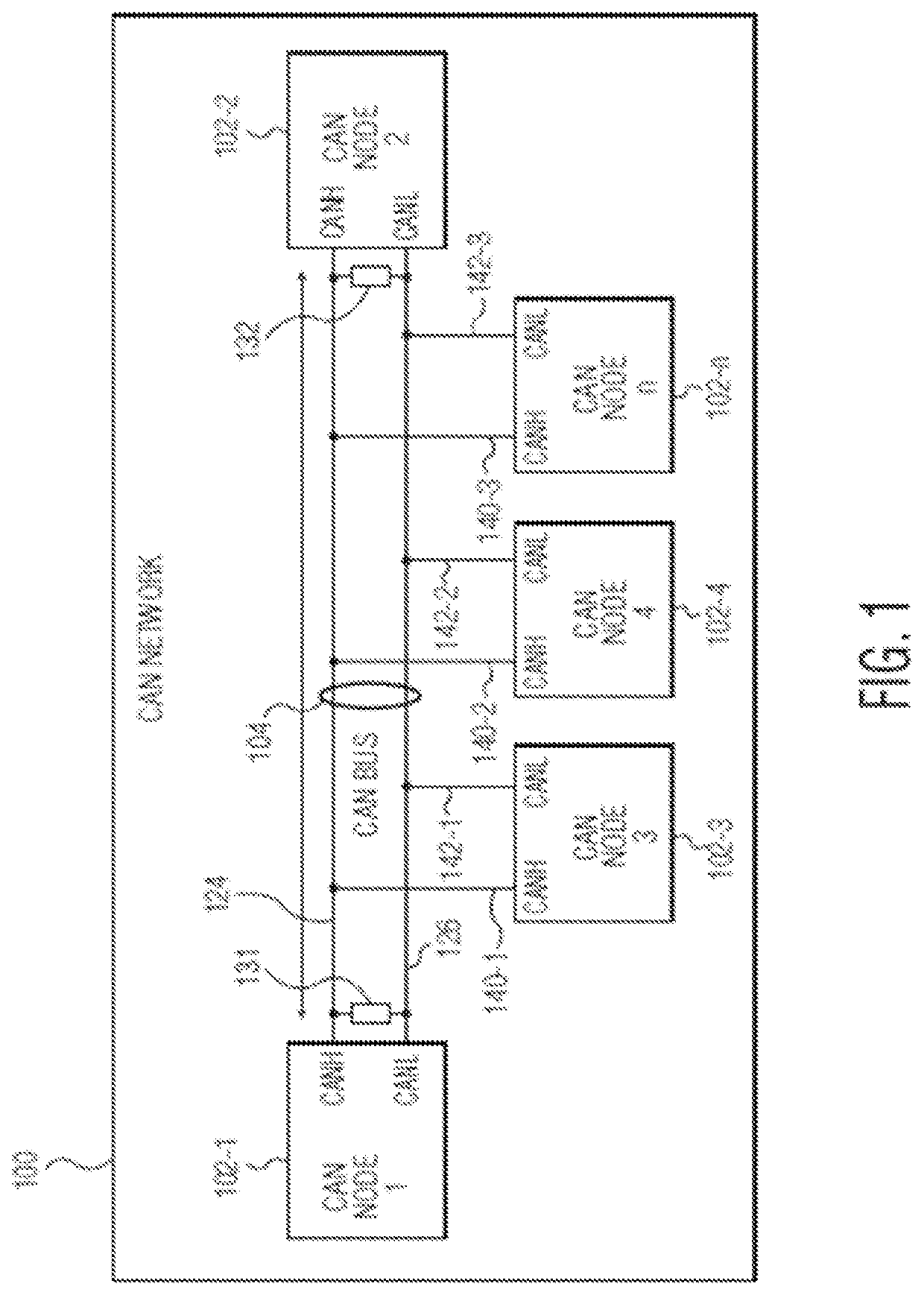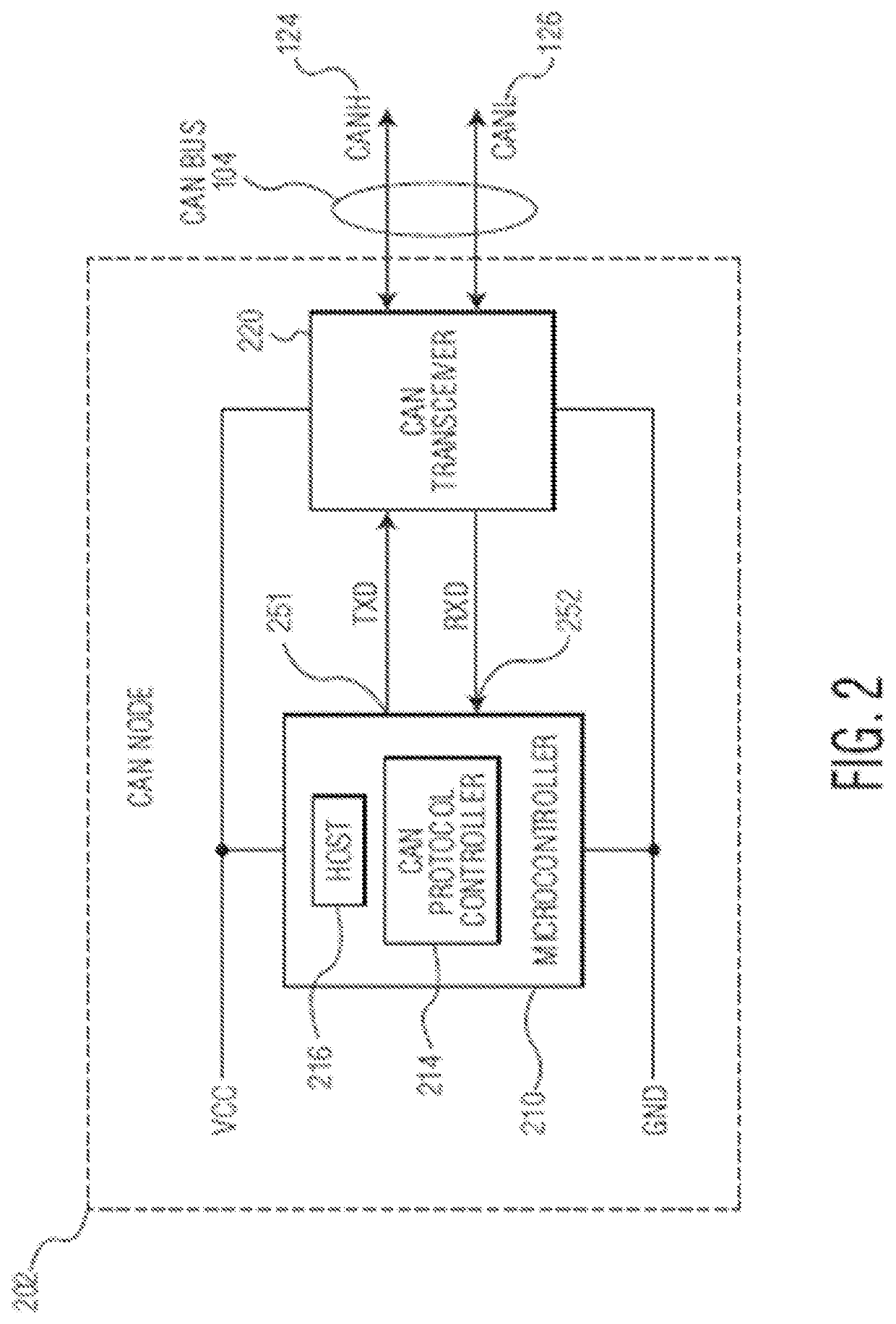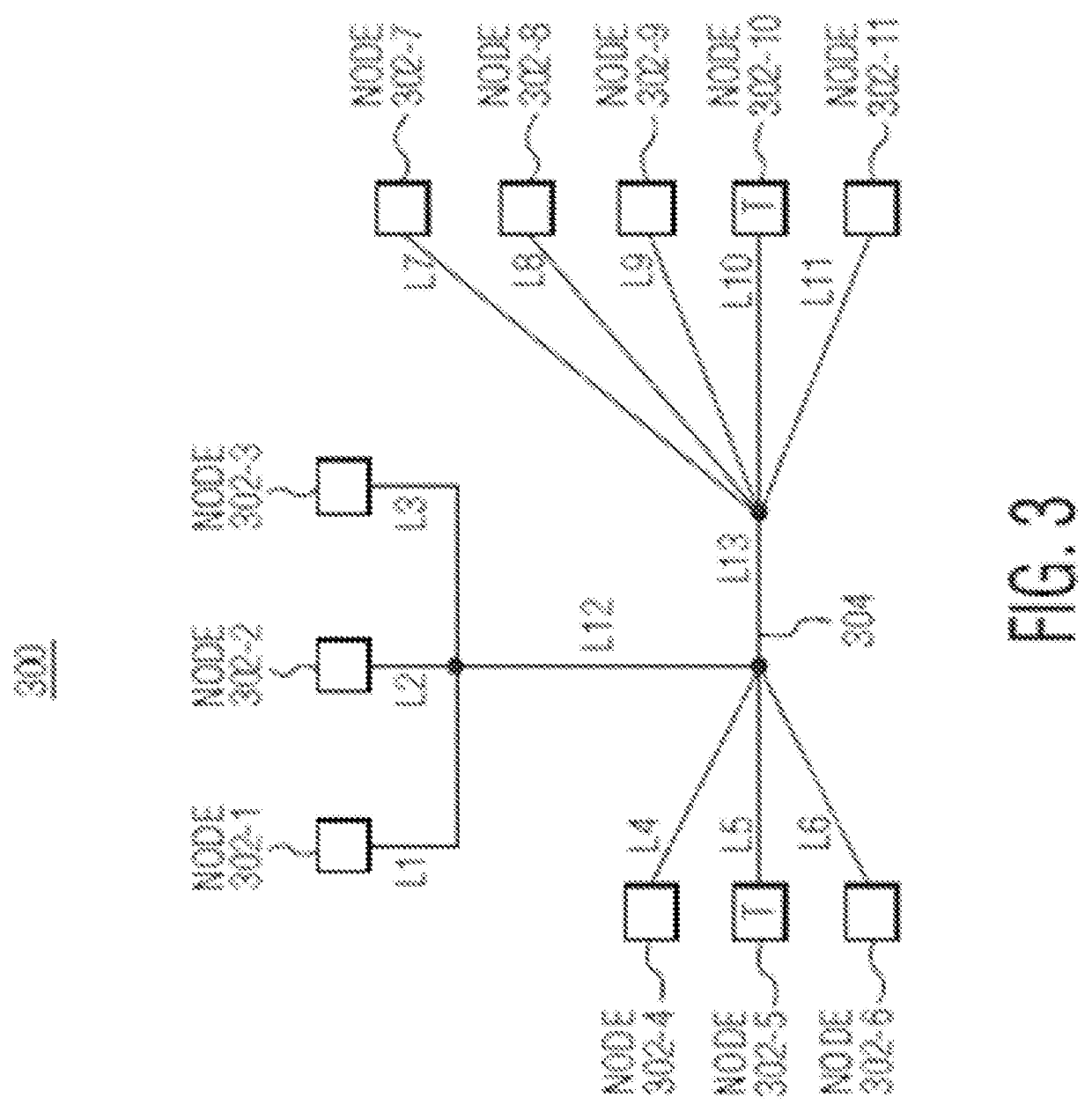Controller area network (CAN), can device and method therefor
a controller area and can technology, applied in data switching networks, baseband system details, pulse techniques, etc., can solve problems such as possible data rate, ringing on the bus, and limiting data rate to a speed below the speed, and achieve the effect of suppressing ringing
- Summary
- Abstract
- Description
- Claims
- Application Information
AI Technical Summary
Benefits of technology
Problems solved by technology
Method used
Image
Examples
Embodiment Construction
[0019]A recently proposed CAN system employs a feedback architecture for ringing suppression. One problem with such feedback architecture is that from a system point of view it is less predictable, and the architecture has to rely on filtering in order to prevent false triggering. In accordance with some example embodiments of the present invention an approach that combines both a feedforward and feedback concept is described, which alleviates or prevents false triggering. In this manner, it is possible for a CAN system to exhibit the best ringing suppression performance of both concepts, for example at lower CAN and CAN FD baud-rates.
[0020]In accordance with some example embodiments of the present invention, there is provided a Controller Area Network, CAN, device, that includes: a transmitter, for example an impedance bridge, connected to two CAN bus terminals of the CAN device; a receiver circuit operably coupled to the two CAN bus terminals of the CAN device; and a controller, f...
PUM
 Login to View More
Login to View More Abstract
Description
Claims
Application Information
 Login to View More
Login to View More - R&D
- Intellectual Property
- Life Sciences
- Materials
- Tech Scout
- Unparalleled Data Quality
- Higher Quality Content
- 60% Fewer Hallucinations
Browse by: Latest US Patents, China's latest patents, Technical Efficacy Thesaurus, Application Domain, Technology Topic, Popular Technical Reports.
© 2025 PatSnap. All rights reserved.Legal|Privacy policy|Modern Slavery Act Transparency Statement|Sitemap|About US| Contact US: help@patsnap.com



